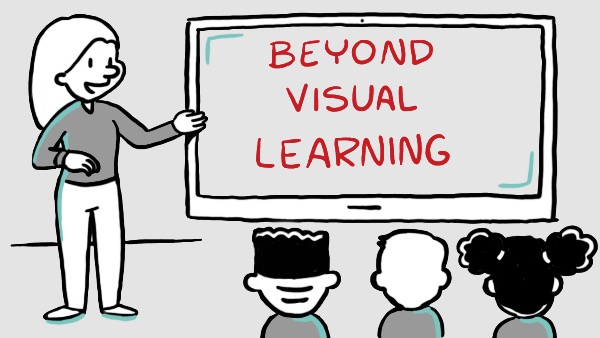By now, it’s common to reject (at least partly) the idea that people are certain ‘types’ of learners, in the traditional sense. We’re not simply auditory, hands-on, or visual learners—we’re almost all of us some combination of these, and reducing the complexity of education to these simple funnels is… well, reductive. It’s missing two key points, to be argued here: first, in some strong sense, we’re all visual learners, and perhaps more importantly, our learning styles are not fixed and unchanging.
As TeachThought and Jackie Gerstein articulate, “the idea of ‘learning styles’ has fallen out of favor in education, [even if] the idea that there are different methods of ‘ingesting’ information and that differences between and across these methods can have a significant impact on a student’s learning is difficult to argue.” Yes, there are differences between learners, and yes, they’re worth examining—just in far more detailed ways than the old short-list method would imply.
And even when we zero in on an aspect like visual learning—which, as we’ll see, we should—there are variations not only in types of visual learning, but shifting usefulness around those variations based in age, experience, and more. Text, after all, can easily be considered visual to most, while others might not see it that way.
Dana Jandhyala draws a distinction between textual description and “a video or pictorial representation”, and concludes that “visuals hold more appeal than plain text to those curious and intuitive young minds.” Her inclusion of the statistic that 65% of the population are visual learners is, therefore, both illuminating and something of a qualification—textual learning, to her, is not visual learning.
Tess Olson, artist at TruScribe and former Wisconsin kindergarten-through-fifth grade art teacher, saw things with more nuance. “I would tell them what we were going to do but there would also be a list on the board of what we were going to do, as well as visuals to accompany those steps.” What she calls visuals might have held some distinction from text, she says, but it wasn’t so much an inherent difference as a practical one: “My littles couldn’t read. They’re just learning how to learn,” she smiles.
Even when age permitted text as the type of visual to be useful, Tess points out that her multi-pronged approach to teaching was multi-pronged by design. “All of the steps, all of the motions, the text, the numbers, the visuals, the demonstrations—some students might need all of those things, some students might need one of those things, and there’s a range of all of those things.”
So, visuals might best be understood as more complex than simply “things one can see,” and simultaneously as a learning tool that’s biologically proven to be superior than many others. A sampling of Jandhyala’s other statistics makes this undeniable: 90% of the information transmitted to the brain is visual, and the mind can process 36,000 visual messages per hour.
Visual learning is also a key portion of any strong learning material mix due to its ubiquity in modern life. Especially for “the modern youth to whom… tech savvy skills are a given necessity in their day-to-day life,” as Usha Sunil puts it, the accessibility of visual instruction (paired with its efficacy) makes it highly appealing.
“All one requires is a simple internet connection,” Sunil goes on, to have a world of visual instruction at one’s fingertips—and Tess speaks to the value of this visual/technological integration in the classroom. “We had smartboards in our classrooms—a big monitor that you can touch and move things around on. It’s essentially an enormous iPad,” she explained.
For modern learners, visuals are already a major part of life—that’s why strong educational techniques lean into them by leveraging not only the visuals themselves, but the tools learners associate with them. And even with these standard operating procedures came caveats, as Tess remembers: “When they… had their work time, all of those steps and all of those visuals would stay on the smartboard so they could use it as a reference. Depending on how you would learn, if reading the steps was easier for you, you could reference that, and so forth.”
The more we learn that visuals are indeed the most common and effective style of learning, the more we learn about the importance of modulation. At TruScribe, we often talk about how we bring “just the right images” to your script—we don’t simply say that “we add images.”
With visual learning, as with visual content design, it matters how you employ your visual materials. Both rely deeply on an understanding of your audience. Moreover, this understanding itself needs to be an evolving one, as learning abilities, preferences, and tendencies change as learners grow and develop.
So, the next time the topic of ‘learning styles’ comes up, remember—visuals are effective for almost everyone, though almost everyone benefits from a blend of approaches. More importantly, remember that different learners think of ‘visuals’ differently, and even they might change those considerations as time goes on. We go from “learning to be learners” to having “a little more figured out,” and move on from there. Keep up with your learners while they figure it out.

